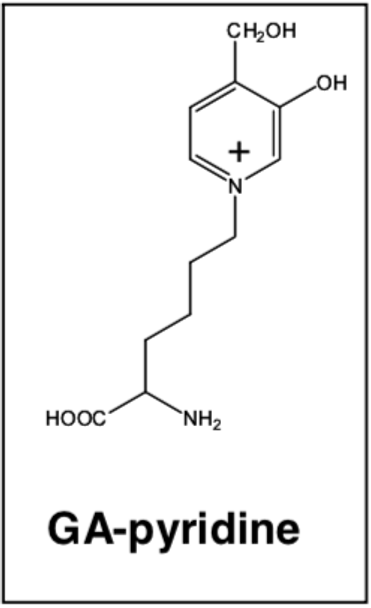Description
Clonality: Monoclonal
Host: Mouse
Purification: Ig-PG
Advanced Glycation End Product (AGE) is a general term for structures generated in the late stage of non-enzymatic glycation reactions (Millard reactions) between reducing sugars and proteins. AGE accumulation is known to be significantly elevated in age-related diseases such as diabetes and arteriosclerosis.
Glycolaldehyde formed as a result of the myeloperoxidase-H2O2 (MPO) reaction can react with proteins to yield various AGEs. Recently, a novel GA-derived AGE, called GA-pyridine, has been described in foam cells and the extracellular matrix of human atherosclerotic fibrotic lesions, glomerular mesangium and Bruch’s membrane and choroid. Since GA-pyridine significantly accumulates in foamy macrophages of atherosclerotic plaques, it is thought that the modification of proteins with glycolaldehyde (GA) is involved in the development of arteriosclerosis.
Source: Professor Nagai Ryuji, Tokai University Faculty of Agriculture Department of Biosciences Food Bioregulation Research Laboratory
References:
1) Nagai R., Hayashi CM., Xia L., Takeya M., Horiuchi S: Identification in human atherosclerotic lesions of GA-pyridine, a novel structure derived from glycolaldehyde-modified proteins. J Biol Chem. 277, 48905-48912 (2002). PMID: 12377783
2) Glenn JV., Mahaffy H., Wu K., Smith G., Nagai R., Simpson DAC., Boulton ME., Stitt AW. Advanced Glycation End Product (AGE) Accumulation on Bruch’s Membrane: Links to Age-Related RPE Dysfunction. Invest. Ophth. Vis. Sci. 50, 441-451 (2009). PMID: 18676633






